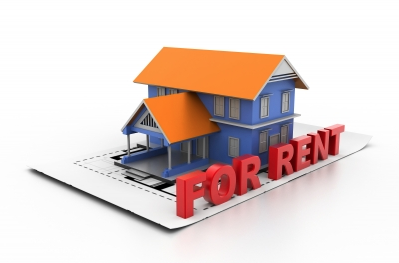Ask pretty much anybody about mortgages and the first, sometimes only thing they want to talk about is the interest rate. In my business as a Mortgage Professional, my job is to educate clients that while interest rate is definitely a cornerstone of your mortgage decision, it is not the only factor to consider when agreeing to sign a mortgage commitment. In many cases, the lowest interest rate does not represent an ideal fit, especially when the actual mortgage isn’t aligned with customer’s stage of life, priorities, or long-term outlook. Rental properties are a prime example of mortgage situations where basing a decision solely on the rate is often short-sighted and in some cases detrimental to the long term viability of one’s investment.
Rental properties can be a lucrative way to diversify investments, build passive income and long term net worth. They can also be costly, rigid and very problematic if you don’t choose the right property, area, tenants and MORTGAGE PRODUCT. Like any investment you are going to do your research before buying – RIGHT? And you are going to take your time and screen potential tenants vs taking the first Kijiji reply from @fraudster.com offering a cash deposit higher than you have specified – RIGHT? I’ll leave that part up to you. Where I come in is ensuring that the mortgage product you are using allows you the most flexibility on your payments and overall investment. The best way to ensure that your rental investment does not become a sucking vampire on your personal bank account is to minimize the cash outlays you are obligated to make.

Enter the Home Equity Line of Credit (HELOC).
In my 10+ years of doing mortgages and owning investment property, the HELOC is far and away my favourite product for investment properties.
First & foremost – CASH-FLOW. HELOC’s allow you the option of making interest-only payments monthly. The monthly payments on a standard $200K mortgage using current 5 yr fixed rate of 3.39% for example are $987. Interest only payments would be about $650. That’s a cash flow difference of $340. Think of a vacancy – they happen. That’s $340 of your own money that you don’t have to pull out of personal savings to cover while your investment income is stalled.
Having the ability to scale back or minimize your cash outlays can be the difference between good and bad when it comes to an extended vacancy, renovation or unforeseen expense such as a repair or insurance claim. This very feature has allowed me to take the time needed to properly screen potential tenants when I have a vacancy and not rush into leasing to the very first interested reply. I can tell you that one of the worst mistakes that can be made with a rental is to scramble to get tenants in so they can start paying rent only to find out you picked the wrong people.
HELOC’s also offer a number of additional features:
- Fully open – imagine somebody comes along offering you top dollar for your investment property. A HELOC is fully open meaning it can be paid off immediately without restriction or early payout charges. You can accept the offer and cash out immediately without seeing profits eroded by penalty charges and fees. With a standard mortgage you may have a payout penalty ranging from 3 months interest into the tens of thousands depending on mortgage type & institution (cringe if you have a fixed mortgage with one of the Big 5 Canadian banks).
- Revolving – so you’re an investment property wizard and the cash you are making has allowed you to pay down the HELOC we set-up dramatically. You can use the available space on your current HELOC towards the purchase of another property. Keep your personal savings and investments in tact and don’t have to ask permission to access the equity. That’s the beauty of revolving credit.
The main (only) drawback to a HELOC over a standard, amortizing mortgage is that the interest rate tends to be slightly higher (about .50%). To me this argument rings hollow. Since your rental property is essentially a business, the interest that you pay on a mortgage is eligible to be written off for tax purposes. Given the strict criteria involved in qualifying for mortgages these days, I’m willing to bet most people with rental properties are already showing income that has them in an elevated tax bracket. That means that every extra dollar of profit reported on tax returns gets annihilated by CRA. Sometimes increasing an individual’s interest expense actually helps them bring their reported profits on rentals close to breaking even and honestly that’s why we have accountants (SIDE NOTE: please use an accountant if you are going to play in the investment game).
Finding lenders who offer HELOCs on rentals isn’t easy, especially if you are wanting only 20% downpayment (80% LTV). Most lenders these days want more meat on the bone (equity) for rental properties. There are definitely good lenders out there doing rental HELOCs at 80%LTV. That’s where a call to your trusted Mortgage Advisor and the proper strategy can payoff in spades.
HELOCs are not just a great product for rental properties. Click HERE to visit an earlier blog I wrote discussing the full range of benefits a HELOC can offer as a mortgage strategy.